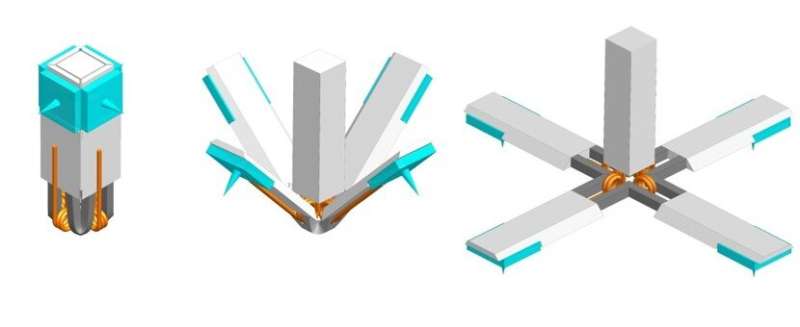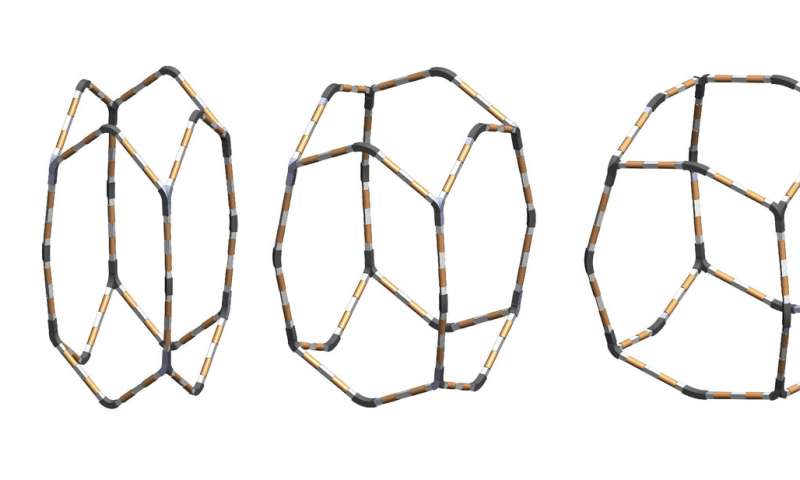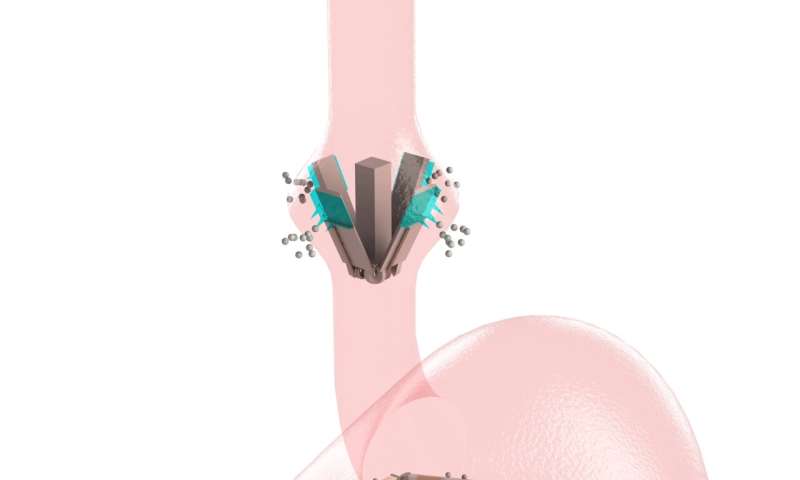Investigators explore temperature-triggered devices for gastrointestinal therapies

Gastrointestinal devices such as stents, endoscopic tubes, balloons and drug delivery systems can help clinicians treat patients with a range of conditions. But currently available methods for triggering where and when drugs are released or when a device is triggered to disassemble or change shape are often slow, which can restrict the utility of such tools. Investigators from Brigham and Women's Hospital and MIT are designing devices that can be triggered by the ingestion of a warm liquid to break down into smaller segments that can be excreted. In proof-of-concept experiments in preclinical models, the team tested two devices—one that could be induced to change conformation in the esophagus to exit following the delivery of a drug, and the other that could reside unperturbed in the stomach until intentionally triggered. The team's results are published in Science Translational Medicine.
"We are intrigued by a simple question: when you ingest a hot liquid, what happens as it travels down your esophagus and into the stomach?" said co-corresponding author C. Giovanni Traverso, MB, BChir, Ph.D., a gastroenterologist and biomedical engineer in the Division of Gastroenterology at the Brigham. "What we've found is that there are essentially two zones—the esophageal and the gastric—which means that we may be able to control and trigger gastrointestinal devices in these two regions with precision using warm water."
The first device the team tested was inspired by a blooming flower. This capsule-sized esophageal system with petal-like structures can close up like a bud when a warm fluid is ingested. The prototype, which was tested in pigs, unfurled in the esophagus, making contact with the esophageal wall and releasing milli-needles loaded with model drugs. When warm water was administered, the prototype fully closed and passed from the esophagus into the stomach.
The second device tested was a highly flexible, gastric resident device capable of releasing drug of extended— a device intended to stay in the stomach and release a regular dosage of a drug for weeks. Ingesting a warm liquid did not disturb the functioning of the device, but directly spraying warm water into the stomach with the aid of endoscope helped break down the device into pieces that could safely pass through the gastrointestinal tract in the pig model.
-

Temperature-triggerable flexible mechanical metamaterial as a macro-device dosage form for long-term GI drug delivery. Credit: Sahab Babaee and Simo Pajovic, MIT/Brigham and Women's Hospital -

Investigators tested two prototype devices in a porcine model: 1) a temperature-triggerable flower-like system for esophageal drug delivery and 2) a temperature-triggerable flexible mechanical metamaterial as a macro-device dosage form for long-term GI drug delivery. Credit: Sahab Babaee and Simo Pajovic, MIT/Brigham and Women's Hospital
"Our approach was to employ design principles of transformable architected materials (mechanical metamaterials) whose shape and volume can be considerably altered through thermal actuation, as a new approach for developing gastrointestinal (GI) technologies with fast and robust response," said first author Sahab Babaee, a postdoctoral associate in the Langer Lab at MIT.
The authors note that the current work provides a proof of concept, but additional testing will be needed to characterize heat dissipation in humans. The team is currently identifying and prioritizing conditions to optimize this new approach for where it is needed most.
"Currently, many gastric devices need to be removed by pulling them out through the esophagus. We anticipate that temperature-triggered systems could usher in the development of the next generation of stents, drug delivery and sensing systems housed in the gastrointestinal tract," said Traverso.
More information: S. Babaee el al., "Temperature-responsive biometamaterials for gastrointestinal applications," Science Translational Medicine (2019). stm.sciencemag.org/lookup/doi/ … scitranslmed.aau8581



















